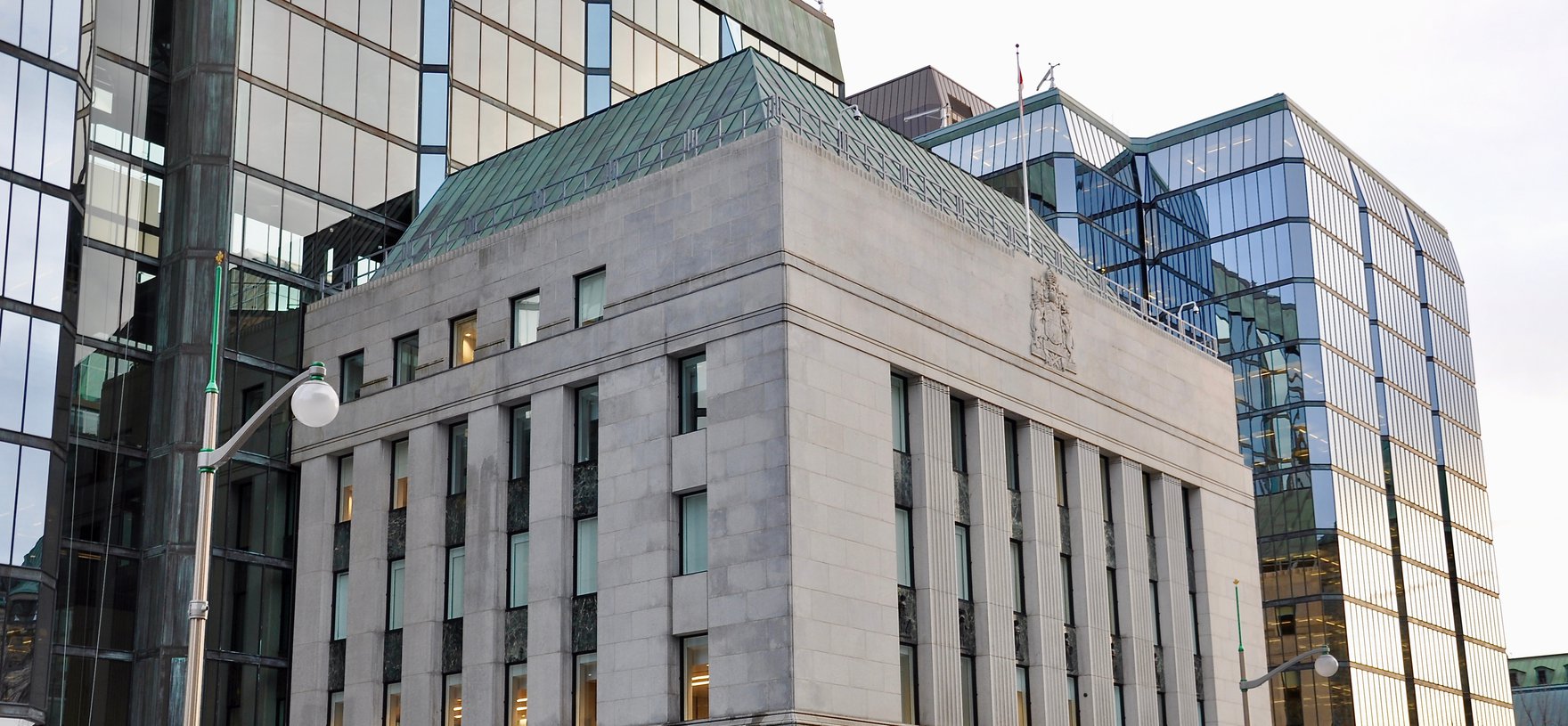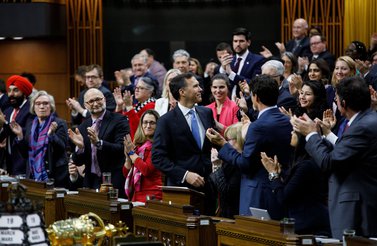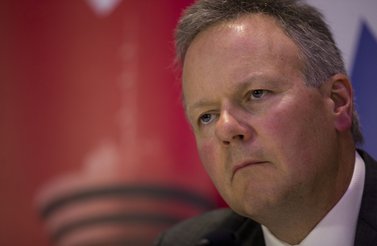The bully pulpit can be a powerful tool for central banks, but it’s hard to be heard over the buzz of a housing frenzy.
“We were giving speeches quite regularly and saying to people, this is a looming problem,” Bank of Canada Governor Stephen Poloz said in testimony before the Standing Senate Committee on Banking, Trade and Commerce on May 1 in response to a question about the efficacy of tighter mortgage rules.
“I shouldn’t have to convince you to put on a life jacket if you’re going out in a canoe. That’s just normal practice,” Poloz continued. “Same thing for a mortgage. You should just sort of stress test yourself, like how would that look if rates were 100 or 200 basis points higher when it’s time to renew. And [the speeches] didn’t really have any effect on any of the numbers.”
It was an important lesson.
Central banks often described the path they took to end the Great Recession a decade ago as uncharted territory. Therefore, they also are creating a map for the next economic meltdown. Policy makers learned that there is no point losing precious time on speech making when it comes to trying to change behaviour. As Poloz told the senators, the Bank of Canada’s microanalysis of mortgage lending shows that “people buy a house and borrow to the extent that they can.” If you want to stop Canadians from endangering financial stability by taking on too much debt, you have to make them stop.
Policy makers knew they were courting trouble when they dropped interest rates to essentially zero in April 2009. They had little choice: they were in the middle of a recession that would reduce GDP by three percent, a recession worse than the one in 1990-1991 and almost as bad as the downturn that crippled the economy a decade earlier, according to International Monetary Fund (IMF) data. Central bankers knew that ultra-low interest rates would jump-start the real economy by stoking demand for houses, which would jolt the construction industry and offset losses from the collapse of global trade.
It worked, maybe too well.
Home building, resales and renovations picked up. Prices jumped across the country. Eventually, housing bubbles formed in Vancouver and Toronto, global cities where demand from international buyers had already been putting upward pressure on prices. Canadians kept buying, pushing the home ownership rate to 69 percent in 2011 from about 66 percent in 2001, according to the Canada Mortgage and Housing Corporation (CMHC), the federal mortgage insurance agency.
There was a cost. Household debt rose to about 100 percent of GDP in 2017 from around 70 percent in 2005, according to IMF data. That debt now represents a weak spot, as all that credit weighs on domestic demand and makes the country vulnerable to a housing bust. “Weaker-than-anticipated housing and consumption” was one of the reasons the Bank of Canada left its benchmark interest rate unchanged on April 24.
When central banks dropped interest rates to zero, they elevated the status of “macro-prudential policy,” a jargony catch-all for regulatory measures designed to prevent booms and busts in asset prices. Unlike interest rates, which affect everyone, “macropru” can be targeted on specific trouble spots, such as real estate. In theory, policy makers could keep borrowing costs low to support business investment without reinflating the bubbles that caused the financial crisis in the first place.
However, relatively few major central banks have control over financial regulation; the Bank of Canada has none at all. The governor sits on an interagency committee chaired by the deputy minister of finance. The group shares notes about financial stability, but all it can do is offer advice to the government. Policy is at the discretion of the finance minister, currently Bill Morneau, member of Parliament for a riding in Toronto.
Arguably, this approach to governance comes with some flaws; the Bank of Canada has all the space it needs to control inflation, but deflating asset-price bubbles is subject to political whim. Ahead of the 2015 election, Stephen Harper’s Conservative government ignored advice from technocrats that something should be done to curb household borrowing. The current Liberal government’s pre-election budget includes new subsidies for first-time homebuyers, proving that the desire to use policy to help voters obtain mortgages is a bipartisan impulse.
“I will continue to act to ensure that household debt levels are sustainable, that lenders are acting prudently, and that increases in interest rates or a housing market downturn don’t put at risk the economic growth we are working so hard to accelerate,” Morneau said in a speech in 2016. His latest budget encourages more borrowing; all things equal, the measures exacerbate Canada’s debt vulnerability, at least marginally.
It might have been worse.
Earlier in his tenure, Morneau did oversee the implementation of tighter mortgage rules, including a stress test that requires federally regulated banks to ensure borrowers could keep up with payments if interest rates spiked or they lost their jobs.
The Bank of Canada estimates that 25 percent of existing mortgage holders wouldn’t have qualified for insured loans under the rule, which came into effect in January 2018. It’s fair to assume a similar number are now being blocked from saddling themselves with excessive levels of debt. The CMHC said May 2 that the housing market’s vulnerability to a bust eased to “moderate” in the second quarter of 2019, ending a streak of consecutive “high” risk warnings that started more than two years ago. “Tighter mortgage rules likely reduced demand for housing and contributed to the observed decline in house prices,” the agency said in its latest quarterly housing market assessment.
Reduced demand and lower prices frustrate the real estate industry. Its lobbyists have successfully made the stress test a political issue, arguing that the policy should be removed or changed. “The damage from these stress tests have been enormous, beyond what many thought was the worst case,” Tim Hudak, head of the Ontario Real Estate Association, wrote in an op-ed published in the Financial Post on April 30. “The rationale for the stress tests is badly flawed,” he added.
These sorts of appeals resonate with politicians, as many have had encounters with constituents who feel they are being blocked from participating in the housing market. “I was hoping you’d say the mortgage adjustment, the stress test, that has been in place now for a short couple of years is something that we should see reduced,” Joseph Day, a senator, told Poloz during the governor’s May 1 Senate testimony. “Your comments seem to suggest there are other factors that are more important to look at. That discourages me and all the people that come to me.”
Poloz defended the stress test. He reminded the senators that the policy is not about lowering prices, but about improving the quality of debt. Interest rates are still low, and debt is at record levels, so it makes sense to leave the restrictions in place, he said. “People are adjusting,” Poloz said. “What we can see is that people aren’t just stopping. They are actually adapting to the rules and those rules are achieving purpose.”
The effectiveness of the stress test shows that macropru can work. Canada remains vulnerable, but the vulnerability is receding a little for the first time in years. That means the bigger financial stability threat could be the politicians. There is a federal election in October, and in the run-up the real-estate lobby will be pushing hard to scrap the stress test.
It would be a popular position for a political party to take. Canadian voters love to borrow.





